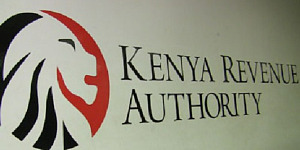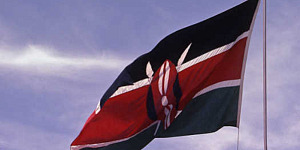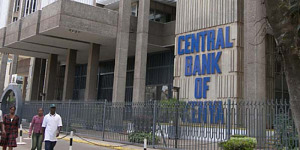On Oct. 16, 2015, Standard & Poor's Ratings Services revised to negative from stable its outlook on the long-term foreign and local currency sovereign credit ratings on the Republic of Kenya. We affirmed the ratings at 'B+/B'.
RATIONALE
The outlook revision reflects our view that Kenya's fiscal performance has deteriorated more than we had previously expected. We understand the primary reason for the wider-than-planned deficit is related to the accelerated construction of Kenya's standard gauge railway. However, even excluding this impact, we view Kenya's fiscal deficit as structurally high and persistent especially considering the relatively high nominal economic growth. In turn, this could place continued pressure on government debt, and potentially increase an already-high stock of external liabilities. All these factors have led to our outlook revision.
Our ratings on Kenya are constrained by its history of ethnic tensions, low GDP per capita, high government debt, and susceptibility to balance-of-payments pressures. Potential disruptions caused by the International Criminal Court's case against the vice-president and, increasingly, attacks by insurgency groups, continue to pose risks. The ratings are supported by a diversified economy with solid economic performance, a strong private sector and growing middle class, and a large and growing domestic debt market that benefits from a flexible monetary arrangement.
Since our last review in April 2015, Kenya's public finances have deteriorated more than we anticipated, with the 2014/15 fiscal year end deficit reaching 9.4% of GDP, compared with the 7.3% of GDP we had expected. Consequently, general government debt increased beyond our expectations, and we anticipate it will increase to 60% of GDP by the end of the next fiscal year; almost 20% of GDP higher than at the end of 2012. We note that the deviation from our budget deficit expectation is mainly related to the accelerated construction of the standard gauge railway (SGR), which will help to plug the country's infrastructure gap and should boost the economy's productive capacity, inlcuding by crowding in further private investment. However, excluding this project-related expenditure, Kenya's structural deficit remains high and broadly unchanged from fiscal year 2013/14, estimated at 6.5%-7.0% of GDP. We expect fiscal deficits will narrow slowly over the forecast (see table).
Following a slight deterioration in budgetary performance during the first half of fiscal 2014/15, relating to lower PAYE receipts, expenditures on the SGR project, defence, and interest all increased above budget. Revenues disappointed compared to budget, with fewer collections from public sector entities (especially the universities) and fewer grants than budgeted.
A recent IMF review pointed out that the government accrued arrears on external debt over the first half of 2015--which we understand was owed entirely to official creditors--totalling some $60 million. We interpret these developments as indicators of weak administrative capacity. We note that government cash balances at the central bank and in commercial banks totalled some 4% of GDP in June 2015.
After contracting $2.75 billion of debt through the issue and re-issue of Eurobonds in 2014, and two loan agreements with China and China Eximbank totaling $3.6 billion (we include disbursements of this amount over the next three years in our debt projections), net government debt increased to 48% of GDP at the end of June 2015, and we expect it will rise to 56% by the end of this fiscal year. This increase accounts for a reduction in government assets to aid expenditures and the impact of a 16% depreciation in the Kenyan shilling on a stock of debt that is 50% denominated in foreign currency.
As a result of the above, we believe that external vulnerability has increased. We now estimate that gross external debt will increase to about 42% of GDP in 2015 from 28% in 2012, with narrow net external debt increasing by nearly 40% of current account receipts (CARs) to 91% (see table). We note, however, that public sector debt--which was mostly contracted at concessional rates--accounts for the majority of this stock. Still, related interest expenditures are increasing as policy rate hikes, designed to tame inflation passed through by the depreciating shilling, are increasing T-Bill costs. Nearly 26% of the banking system's assets are exposures to the government. Interest on external debt is also climbing, reflecting foreign investors' concerns of global liquidity changes and weakening growth in Kenya's core markets. We expect higher interest costs will further pressure Kenya's public finances.
Kenya's projected growth remains a rating strength. Government investment in the railway network and energy-generating capacity support our expectation of an average real GDP growth of over 6% per year between 2015-2018. The $4 billion SGR project is underway and its construction is likely to lead to an increase in local employment and attract related private-sector investment. Cheaper electricity generation costs (the IMF estimates that the unit electricity cost has declined by about 25%) following the introduction of two new geothermal power plants should support consumption's contribution to growth, and boost manufacturing activity. This includes food products, which have also benefitted from increased agricultural production. For the second half of 2015, reports of improved weather conditions indicate an increase in agricutural production. Potential oil production could also lift growth, although we view this as a longer-term prospect, beyond our forecast horizon.
Despite the rebasing of GDP calculations, which added 25% to the size of the economy, Kenya's GDP per capita remains low (we estimate it at $1,305 in 2015) and still reflects an economy heavily dependent on agriculture and soft commodity exports (vulnerable to changing weather conditions) and tourism. Tourism's contribution remains subdued following terrorist attacks (arrival numbers are about 30% down year-on-year), which could also deter investors.
Positively, we think that statistical collection deficiencies (particularly under-reported services exports) are resulting in an overstatement of Kenya's current account deficits, alongside potentially misreported financial account flows, including foreign direct investment (FDI). Nevertheless, lower exports (and prices) of agricultural products, including tea and coffee, combined with a significant increase in machinery linked to capex projects, more than offset the reduced price of oil imports. This has led to a wider current account deficit than expected. Pending a statistical revision, we expect general
current account trends will be dominated by these flows. While the financing of current account deficits is come from FDI and external borrowing, the government's February signing of a $688 million SBA with the IMF will act as a financing cushion should gaps appear. We note that gaps could emerge from higher-than-anticipated imports, increased capital outflows following changes in global liquidity, or if anticipated FDI fails to transpire.
Over 2015, the Kenyan shilling has depreciated some 16% versus the U.S. dollar, causing indicators of external vulnerability, particularly net external debt, to jump substantially given the recent increases in dollar-denominated credit to the public sector. Foreign exchange reserves remain comfortable following the Eurobond issuance, but have declined to 96% of external short-term debt in June 2015 (from 135% in December 2014). However, the potential widening of the current account deficit and increased local demand for foreign currency could well result in further depreciation of the shilling.
In terms of risk to institutional governance assessment, although the ICC has dropped its case against the president, the vice-president still faces charges of inciting violence in the 2007-2008 elections. We view this as potentially destabilizing because it could undermine the president's support base if the vice-president were convicted. We also consider that security risks in Kenya are ongoing. Organizations such as the al-Shabaab Islamist militant group have mounted attacks, while Kenyan troops remain involved in the African Union Mission in Somalia.
OUTLOOK
The negative outlook reflects our opinion that Kenya's fiscal position is structurally weakening and that this will feed into a mounting debt stock, which could also increase external vulnerabilities.
We could lower the ratings if Kenya's fiscal deficits were to widen further or debt increased more than we currently expect. We could also lower the ratings if political tensions flare up and undermine stability-oriented economic policymaking, or if Kenya's external liquidity or financial conditions markedly deteriorate and lead to a significant loss of foreign-exchange reserves.
The ratings could stabilize if we see prospects for lasting political and economic stability, including predictable and improving public finances, particularly regarding expenditure control, as well as funding sources alongside a sustained improvement in Kenya's external accounts.







































